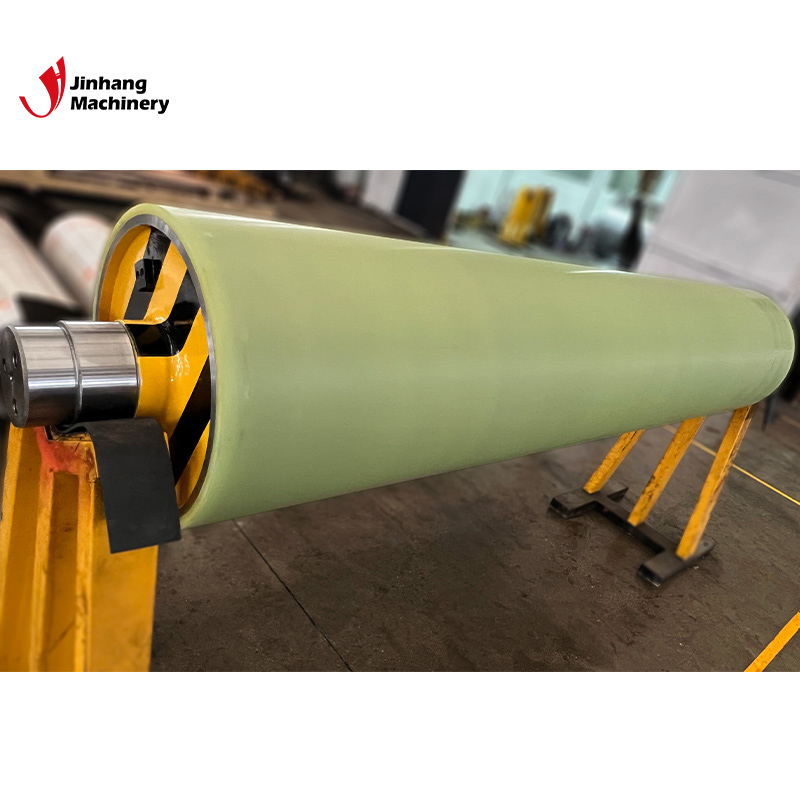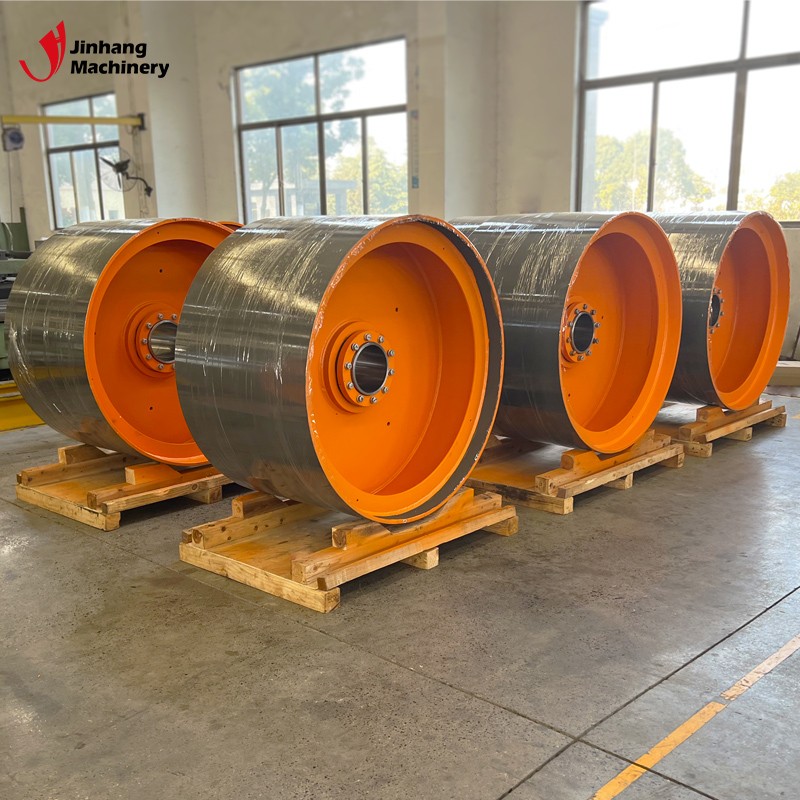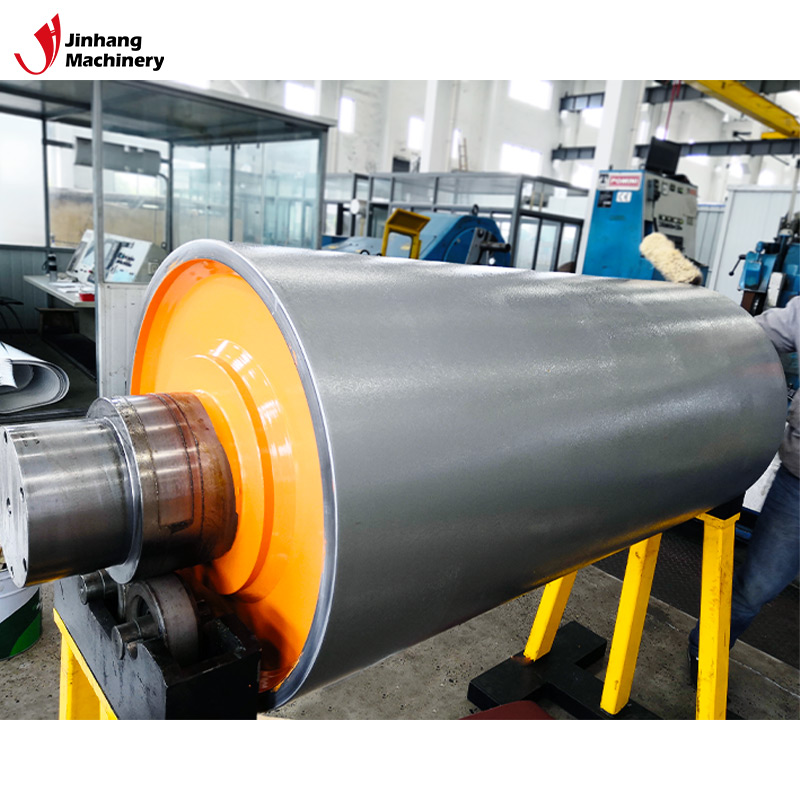Rullo d'acciaio vs. Rullo di gomma: qual è la differenza?

In industrial production, rollers are one of the key components used for processing, transporting and handling a variety of materials. There are many types of rollers, and rollers made of different materials have different functions and characteristics. Steel rollers and rubber rollers are the two most common rollers in industrial applications. They are widely used in many fields such as metallurgy, papermaking, textiles, and printing. Although both belong to the roller category, there are significant differences in structure, performance, use and operation.
This article will discuss the differences between steel rollers and rubber rollers in detail to help readers better understand their different applications and roles in industrial production.
What is a steel roller?
Steel rollers are roller bodies made of high-strength steel and are usually precision machined and surface treated. They have the advantages of high hardness, high wear resistance and high strength, and are widely used in industrial fields that require strong pressing, extrusion and heavy-duty transmission.
The main characteristics of steel rollers include:
● High hardness and strength: Steel rollers are usually made of high-quality steel, such as carbon steel, stainless steel or alloy steel. Their hardness and strength are much higher than other material roller bodies, and they can withstand high loads and high-pressure operations.
● Strong wear resistance: After surface treatment such as quenching, chrome plating or tungsten plating, the steel roller has extremely high wear resistance, is suitable for long-term use, and is not easy to wear in high friction environments.
● High temperature resistance: Steel rollers can work stably in high temperature environments and are suitable for production processes that require high temperature heating or processing, such as steel rolling, plastic extrusion, etc.
● High precision: Because the steel roller has been precision processed, its surface flatness and dimensional accuracy are high, and it can maintain stable product quality in high-precision processing and production.

What is a rubber roller?
The rubber roller is a roller body based on a metal core and covered with a rubber layer. The elasticity and softness of rubber materials allow rubber rollers to be used in many applications where surface protection or shock absorption is required.
The main characteristics of rubber rollers include:
● Elasticity and softness: The biggest feature of the rubber roller is its elasticity and softness, which can effectively absorb impact and avoid damage to the material surface. It also has good anti-skid properties.
● Chemical corrosion resistance: Rubber materials have good resistance to acids, alkalis and solvents, so rubber rollers are often used in chemical industry, food processing and other industries.
● Good shock absorption performance: The rubber roller can effectively absorb mechanical vibration, reduce noise and mechanical impact, and is suitable for high-speed equipment.
● Strong adaptability: The surface hardness of the rubber roller can be adjusted as needed, and is suitable for processing different materials, especially fragile and easily deformed materials.

Steel Roller Vs. Rubber Roller: What’s the Difference?
Material and structural differences
There are significant differences in material and structure between steel rollers and rubber rollers. The steel roller is made of all-steel material and has a solid structure, suitable for high-load and high-precision processing operations; while the rubber roller wraps a rubber layer outside the metal core and mainly relies on the elasticity and flexibility of rubber for material processing.
Differences in application areas
Due to different materials and structures, there are obvious differences in the application fields of steel rollers and rubber rollers. Steel rollers are usually used in metallurgy, steel rolling, heavy machinery and other applications that require high strength and high wear resistance, while rubber rollers are widely used in printing, packaging, textile, food processing and other industries that require surface protection of materials.
Performance differences
Steel rollers have the characteristics of high hardness, high strength and high wear resistance, can withstand high load, high temperature and high pressure operating environments, and are suitable for heavy industrial production. Rubber rollers are known for their softness, elasticity and good chemical resistance, and are more suitable for applications with light loads, low temperatures and high surface protection requirements.
Maintenance and service life differences
The surface treatment of the steel roller makes it have a long service life and extremely high wear resistance, but it is heavy and relatively complicated to maintain and replace. Due to the elasticity and chemical stability of the rubber layer, rubber rollers have a long service life under appropriate use environments. However, the rubber layer may age and wear out during long-term use, and requires regular maintenance and replacement.

Steel Rollers Vs. Rubber Rollers: Application Comparison
Metallurgical industry
In the metallurgical industry, steel rollers are one of the key equipments and are mainly used for rolling and processing of steel. Steel rollers can withstand high temperature and high pressure operations, ensuring that the steel reaches the required shape and size during the rolling process. In contrast, rubber rollers are rarely used in the metallurgical industry because of their insufficient high temperature resistance and pressure bearing capacity.
Printing and packaging industry
Rubber rollers are widely used in the printing and packaging industries. The elasticity and softness of the rubber roller enable it to apply ink evenly during the printing process, ensuring printing quality while reducing damage to paper and film. In these industries, steel rollers are mainly used for processes that require higher pressure, such as lamination and creasing.
Textile industry
In the textile industry, rubber rollers are often used for the transmission and processing of fabrics, which can effectively prevent scratches and deformation of fabrics. Steel rollers are mostly used in flattening and shaping processes, using their high hardness and stability to provide uniform pressing effects on fabrics.
Food processing industry
In the food processing industry, rubber rollers are popular for their good chemical resistance and hygiene and are often used in food conveyor belts, packaging and slitting. Steel rollers are more commonly used in the transmission system of food equipment to provide necessary mechanical power support.

How to choose the right roller?
When selecting a roller, you first need to consider the characteristics of the material being processed. If the materials being processed are hard, thick and require high-intensity pressing, steel rollers are a better choice; if the materials are soft, fragile or require high surface protection, rubber rollers are more suitable.
Secondly, the working environment is one of the important factors in selecting rollers. If the operating environment temperature is high, the load is heavy, and the equipment is required to have a long service life, then steel rollers are the ideal choice. In low temperature, light load and chemical environments, rubber rollers perform even better. In addition, different production processes have different requirements for rollers. Steel rollers are suitable for processes that require high precision, stability and strong pressing, while rubber rollers are suitable for processes that require gentle handling and material surface protection.
Summarize
Steel rollers and rubber rollers each have their own advantages and disadvantages, and they play irreplaceable roles in different industrial fields. Steel rollers are suitable for heavy industry and high-load processing due to their high strength, high wear resistance and long life, while rubber rollers occupy a place in light industry and fine processing due to their elasticity, softness and good chemical resistance.
Choosing the right roller is not only based on the characteristics of the material or the needs of the working environment, but also the specific requirements of the production process. Through an in-depth understanding of steel rollers and rubber rollers, companies can better optimize equipment configuration in industrial production and improve production efficiency and product quality.
La scelta del rullo giusto non si basa solo sulle caratteristiche del materiale o sulle esigenze dell'ambiente di lavoro, ma anche sui requisiti specifici del processo produttivo. Attraverso una conoscenza approfondita dei rulli in acciaio e dei rulli in gomma, le aziende possono ottimizzare meglio la configurazione delle apparecchiature nella produzione industriale e migliorare l'efficienza produttiva e la qualità del prodotto.